Join Our Product Manager Sharon As She Visits Extremadura – Spain’s Hidden Gem
If you haven’t heard of Extremadura, a magnificent region of Spain, you are in the minority…for now.
Spain’s beauty is renowned worldwide, its bustling cities brimming with art and its white sandy beaches lining the coasts. However, for a travel company, the greatest pleasure lies in discovering a hidden gem on the Iberian Peninsula. Sharon, our Junior Product Manager, found this in Extremadura, a relatively unknown destination perfect for Headwater customers.
Extremadura, a region in western Spain bordering Portugal, is known for its rich historical heritage and unspoiled natural landscapes. With its rolling hills, vast plains, and protected nature reserves, it is home to medieval towns, Roman ruins, and traditional Spanish culture. Despite its beauty and cultural significance, Extremadura remains one of Spain’s lesser-known regions, offering a tranquil and authentic travel experience.
I had the pleasure of visiting the region in October, kindly invited by Extremadura’s Tourism Board for ‘Meet Extremadura’, an event to promote the cultural, natural, and historical treasures of this corner of Spain.
Few people realise that Extremadura is home to several nature reserves and national parks protecting its delicate, tradition-rich environment. These conservation efforts have created an ideal habitat for migrating birds, making the region one of Spain’s richest and most diverse areas for birdwatching.
Those who visit Extremadura are rewarded with a wealth of activities and experiences, such as learning how olive oil is produced, tasting the local wine – a tradition dating back to Roman times and for which this region has its own denomination, savouring delicacies like Pata Negra ham, and, last but not least, stargazing under one of the clearest and darkest skies in Europe, certified by The Starlight Foundation.
My journey began in Madrid, with an easy transfer to Cáceres, in the north of the region. This beautiful city, with its medieval and Moorish influences, welcomes visitors with its vibrant colours and rich culture. Cáceres is fast becoming a hub for art lovers, with its university training new guides for the stunning Helga de Alvear Museum of Contemporary Art.
I had the privilege of an exclusive after-hours visit with our guide and local resident, Pilar. The collection features works by international artists such as Ai Weiwei, as well as iconic Spanish figures like Goya. It was a real treat and an eye-opener, as the provocative nature of some of the artwork leaves a lasting impression.
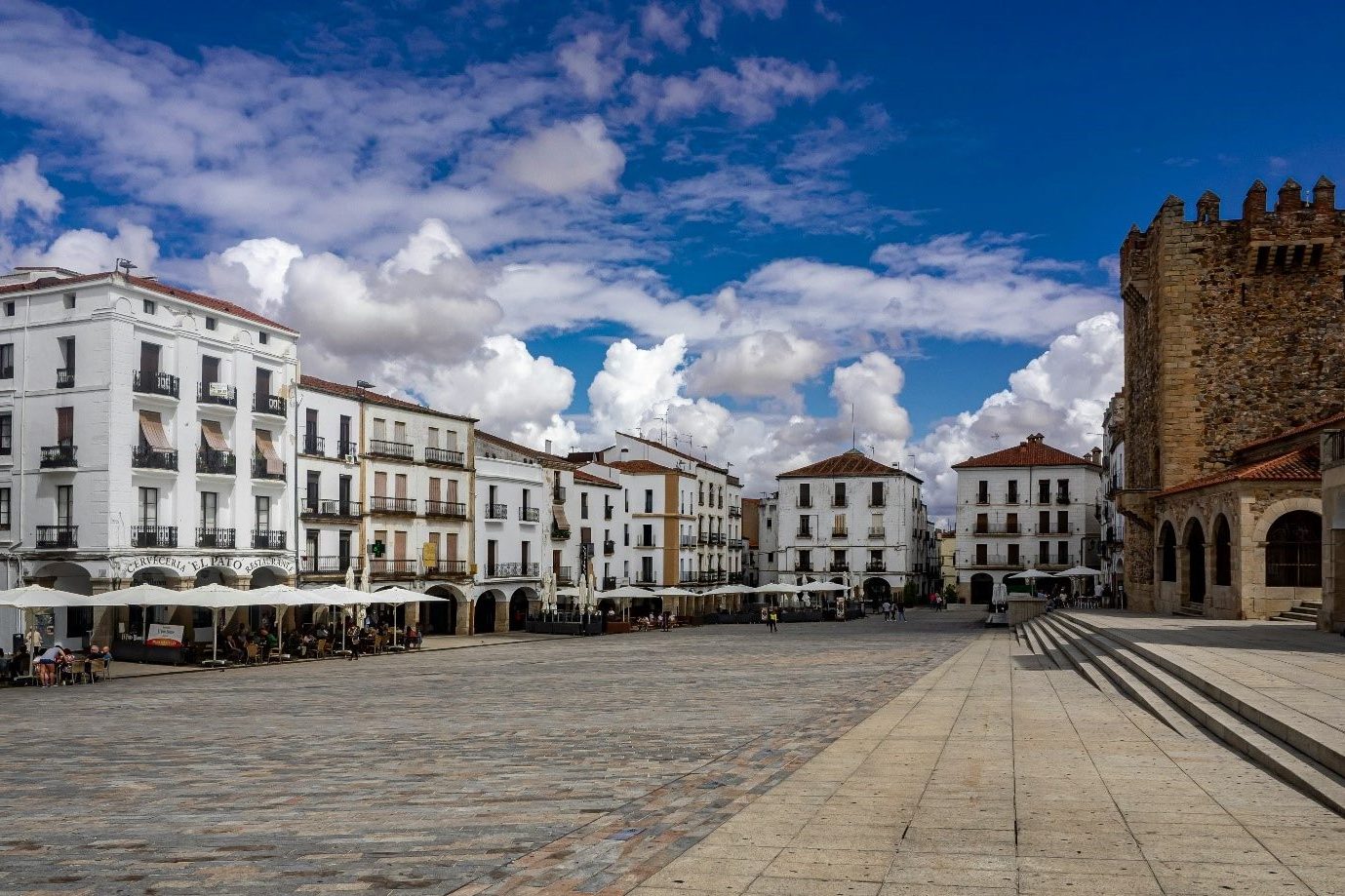
For history enthusiasts, Cáceres is a treasure trove of medieval buildings, Renaissance palaces, and royal influences. From the main square, where bars and cafés overlook Renaissance towers, visitors can walk through the city gates, feeling as though they’re on a film set—indeed, Cáceres has been used multiple times as a location for Game of Thrones. Daily tours of the medieval quarter are available, and more information can be found at the Oficina de Turismo in Plaza Mayor.
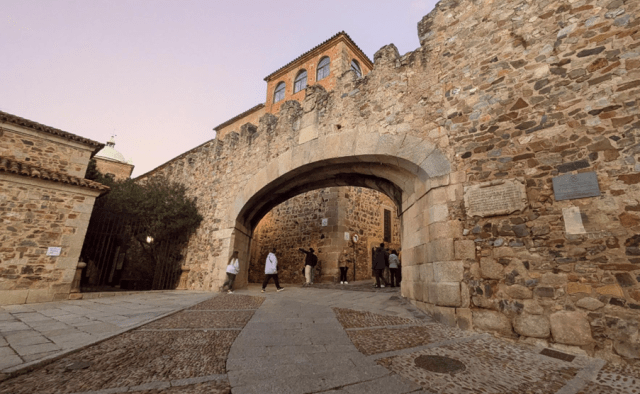
Next on our itinerary was a cycling tour of Hervás and the Ambroz Valley. Located in the north of the region, this area boasts lush green landscapes and is close to the Gredos mountains. The cycling paths are well signposted and maintained, providing ample opportunities to pause and enjoy the stunning views.
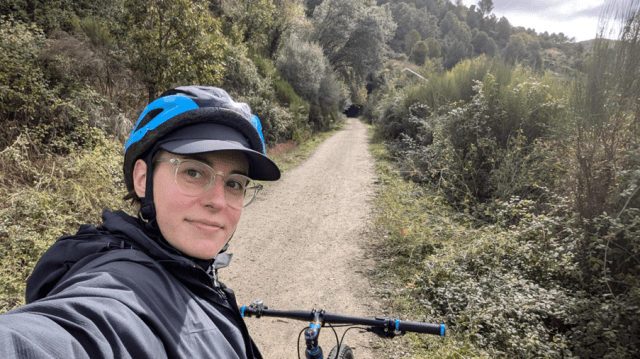
Another highlight of the region is the Jerte Valley, renowned for its cherry trees. I highly recommend visiting in spring to witness the breathtaking blossom. During the autumn, the trees are changing their foliage alongside the chestnut trees, creating a spectacular scene. The region produces the famous Picota cherry, particularly in Jerte, Ambroz, and La Vera. This variety easily detaches from its stem when ripe, ensuring a longer shelf life and easier transportation across Europe.
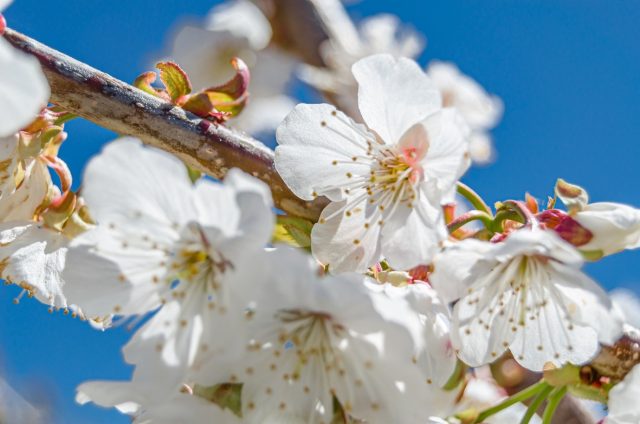
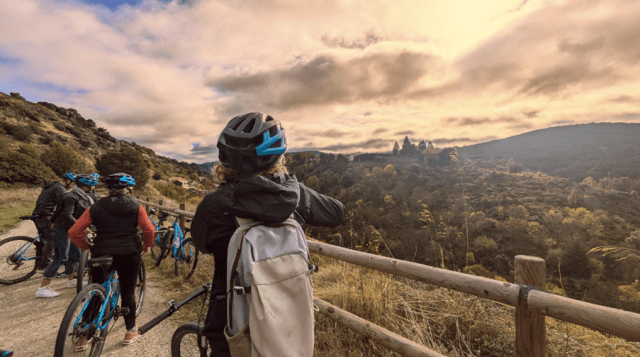
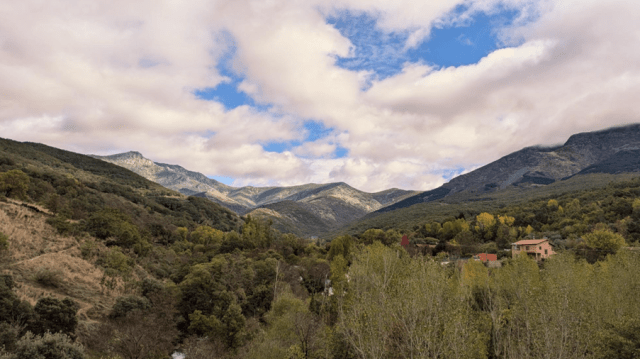
The area’s biodiversity, including oak and cork trees essential to local artisanal production, is vital to the region’s prosperity and rural life. Just south of Hervás lies Plasencia, notable for its impressive 15th-century cathedral and Renaissance palaces. Further south, we had a peak at the Monfragüe National Park, a pristine area largely untouched by human presence, home to a variety of birds of prey, including the black vulture, eagle owl, griffon vulture, and the majestic Spanish Imperial Eagle. It is a paradise for birdwatchers and nature lovers alike.
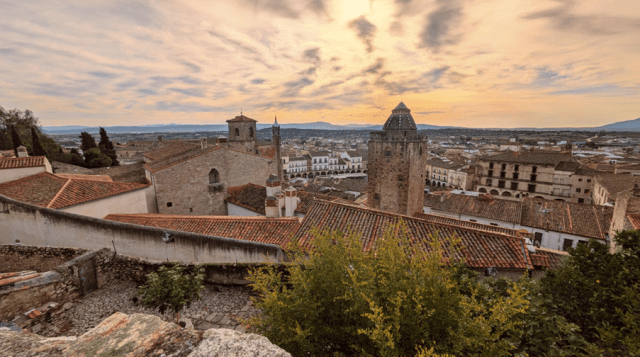
My journey concluded in Trujillo, a medieval city rich in history, perched on a hill with stunning views of the surrounding valley. The town’s churches, convents, and Renaissance palaces have been converted into museums and hotels, offering visitors a glimpse of life in the 15th and 16th centuries. Trujillo is also the birthplace of Francisco Pizarro, the conquistador of Peru, born here in 1475. His family’s palace can be admired in the main square alongside his statue. The town also boasts Roman remains and an impressive Moorish castle, another popular filming location.

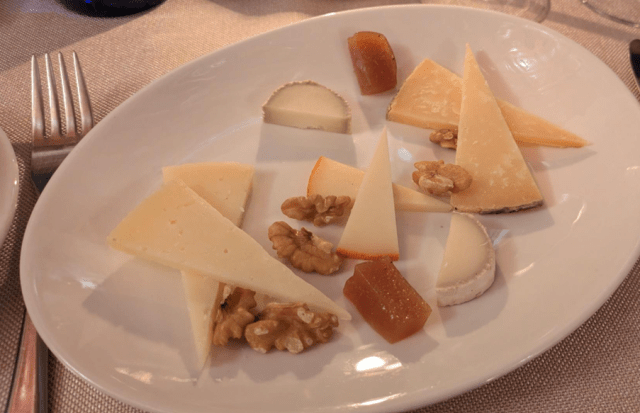
In the northern part of the region, paprika production is dominant, especially in La Vera, home to the renowned sweet smoked Pimentón de La Vera. Despite the fast pace of modern life, Extremadura has the power to slow time down, bringing nature and tranquility to the forefront while making you feel truly looked after.
A special thanks to the Junta de Extremadura and the Spanish Tourist Office for their incredible hospitality, staff, and wonderful guides we met on our journey.
Would you like to discover more? Why not book our Cycling Central Spain in Style tour (trip reference C07PC) and experience the warmth and hospitality of Extremadura for yourself?
Or, if you have already experienced this trip, share your thoughts or ask any questions in the comments below!